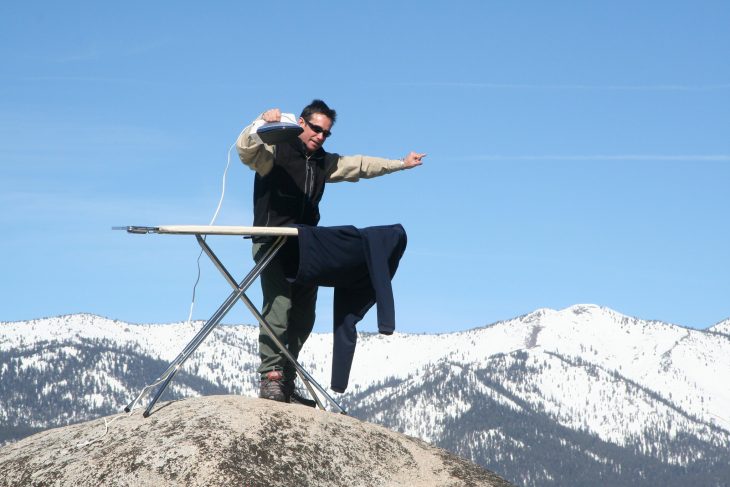
Have you ever heard of extreme ironing? If you haven’t, you wouldn’t be the only one. Ironing is a physical chore describing the act of using steam and metal to remove any wrinkles on our clothes. It involves an ironing board, which is a flat narrow board with foldable legs attached, and the steam iron, which is the machine used to collect steam and heat to remove wrinkles. The word extreme refers to something over the top, great, or at its highest level. So what is the highest level of ironing?
Extreme ironing is a British-born sport that works to combine three things: physical strength, mental strength, and humor. It’s not surprising if you don’t know anyone that does ironing for sport. You can even check images on the net to see how crazy ironing can be. Some people capture themselves ironing clothes while scuba diving, spelunking, and even midway up a cliff!
Despite how ridiculous the sport sounds, many take extreme ironing seriously. People even created organizations to handle various challenges and establish rules when participating in them. An example of this is the Extreme Ironing Bureau, also known as EIB, which promotes and regulates the sport. Thanks to the EIB, the rise of the sport’s popularity even caused world championships to take place as well.
But we are getting ahead of ourselves. Learning about extreme ironing is a good way to use a few minutes of your time. This is because the few who do participate in the activity find themselves challenged in ways beyond how most people know and do. Having to dive out of a plane is difficult on its own, but carrying an entire set of ironing equipment? It’s a whole new world.
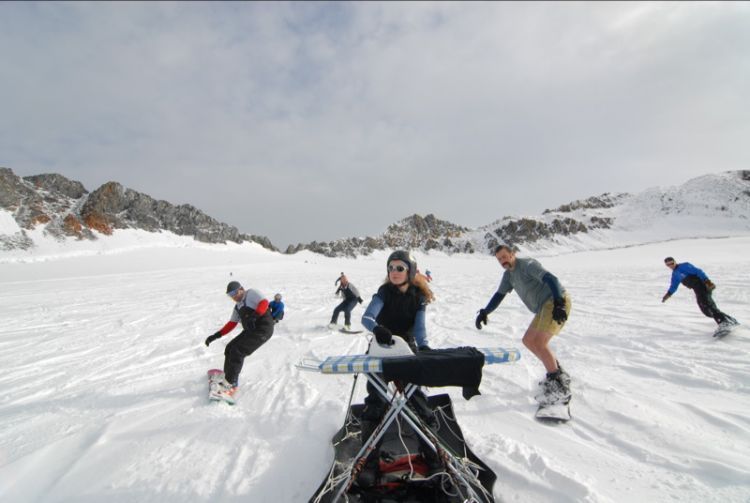
What is Extreme Ironing?
The truth is you can explain extreme ironing easily on its surface level. It is when someone does extreme sports such as abseiling, bungee jumping, mountain climbing, or skydiving while ironing their clothes. However, the sport itself is so much more complex than that. The idea is that it combines the thrill of danger and satisfaction from well-pressed laundry. Think of it as adrenaline junkies being productive in their activities and chores.
You can look at extreme ironing from two different perspectives. The first is that it is a dangerous stunt to be pulled while doing an already life-threatening act. The second one is it is something fun and ridiculous that people will smile and enjoy doing or watching it.
Most people need full concentration when performing the sport. They would even do this outdoors in locations that are difficult to reach. It can be done while being tied to the back of a car or in the middle of a dark and narrow cave. Either way, the concentration needed to iron clothes and remain safe from harm adds the much-needed thrill.
Where Can You Do Extreme Ironing?
As we’ve discussed, extreme ironing is done outdoors. The whole point of extreme ironing is to do it in locations that are already difficult to traverse on their own. The more dangerous and irrational, the better.
However, there must be rules and regulations to where you can do them. After all, if you randomly find someone ironing on top of a cliff, the first thing you might do is call for help. This is where the Extreme Ironing Bureau comes in to give guidelines and promote the sport itself.
Most people suggest practicing in an open space such as a backyard before attempting to iron in more difficult locations. This is because the sport itself may look lighthearted, but it can cause harm, not only to the performer but also to the spectators and bystanders.
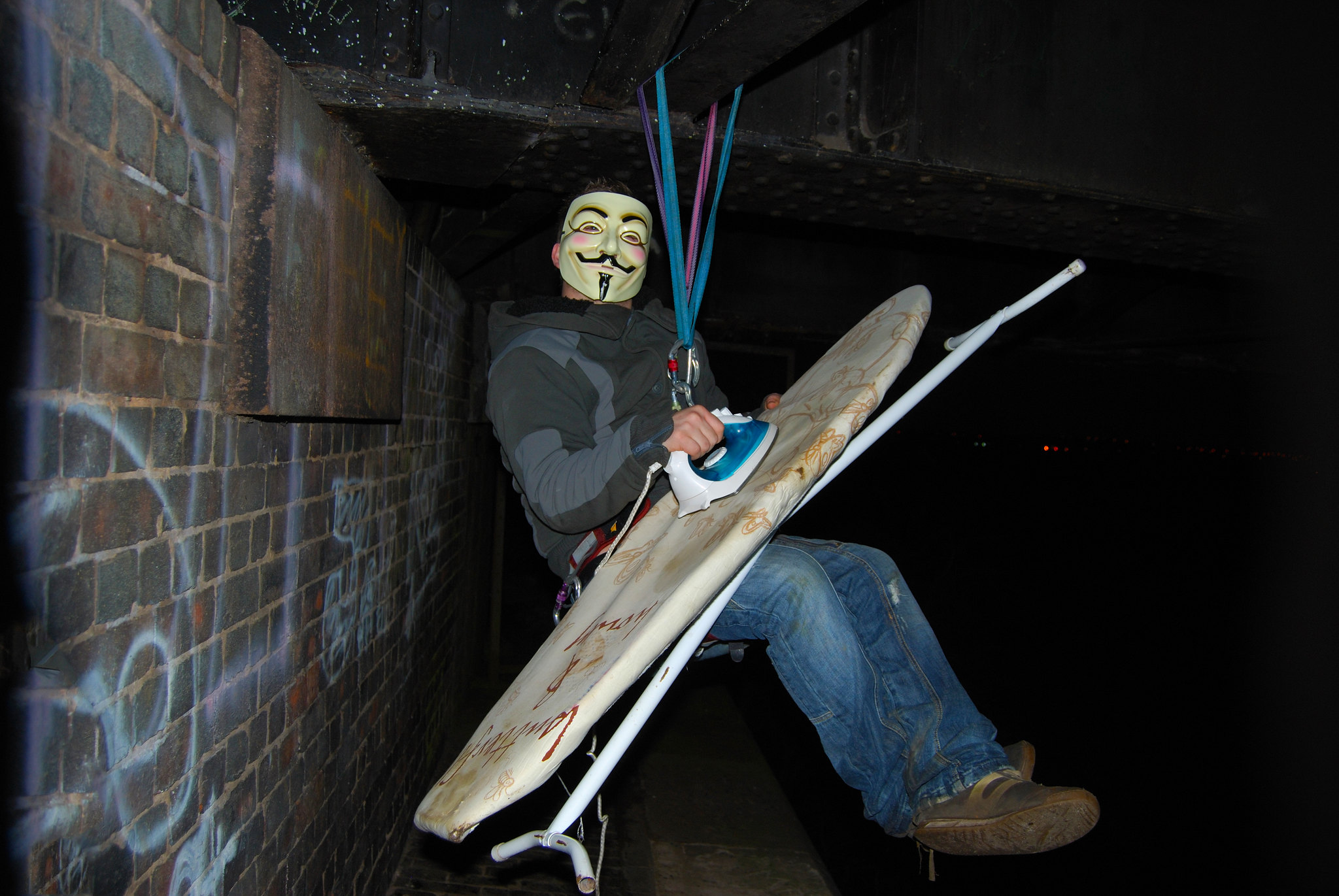
Origins of Extreme Ironing
So when did extreme ironing start? There are two credited founders when it comes to extreme ironing. The first one is Tony Hiam, who was in Yorkshire Dales National Park (Settle, England) in 1980. The second one refers to Phil Shaw as the originator of the sport in 1997 in Leicester, England.
Tony Hiam was inspired to iron while doing different types of sports in the 1980s because of his brother-in-law. Hiam’s brother-in-law was consistent in bringing a steam iron and ironing board everywhere they went. There were many times that Hiam himself had to bring the ironing sets even while camping. To make fun of his brother, Hiam began ironing their clothes in ridiculous positions, thus leading to extreme ironing.
On the other hand, Phil Shaw popularized the sport in 1997. It was a summer evening when Shaw returned home from a tiring day at his job in a knitwear factory. He had been fantasizing about rock climbing throughout most of the day. Unfortunately, he came home to find his clothes stacked and needed to be ironed. Shaw knew that he needed to do his chores before any outdoor activity, but he also wanted to be in the outdoors just for a few moments. So, Shaw grabbed his lengthy extension cord and plugged it to reach his backyard. At the time his roommate, Paul Cartwright (who eventually becomes an ironer himself), asked what he was doing. Shaw replied to Cartwright by calling his activity “extreme ironing”.
Phil Shaw began bringing his ironing board everywhere with him. He even brought the ironing set every time he went rock climbing. As Shaw found fun in people’s reactions whenever he does extreme ironing, he started promoting it under the nickname “Steam” in June 1999. For his promotion, he visited countries like Fiji, New Zealand, South Africa, Australia, and the United States. It was during his worldwide travels that he met German tourists who he eventually formed Extreme Ironing International with.
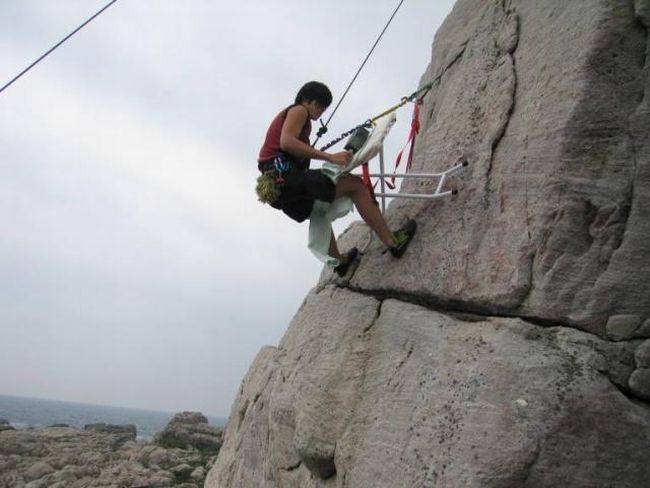
Extreme Ironing’s Rise in Popularity
Extreme ironing is a sport that has received both criticism and praise, and of course worldwide attention. There are at least two noteworthy events that sparked the rise in extreme ironing’s popularity.
The first one is the first Extreme Ironing World Championship in 2002. There were 12 teams from Germany, Croatia, Chile, Australia, Austria, and Great Britain (three teams were built for Britain which had to be separated into three groups called GB1, GB2, and GB3). It was held in September in Valley, Bavaria around the Miesbach district of Munich, Germany.
The rules had participants perform ironing in five separate challenges. The first one was with a broken car. Judges allowed the ironers to perform in, around, or on top of it. The second challenge involved ironing in the middle of a fast-flowing river. Next, participants had to climb up a tree to iron their clothes. The fourth challenge involved climbing a wall and then ironing. The final and most interesting challenge is the freestyle. In this challenge, ironers were free to iron anywhere they wanted. In the end, the first champion in history came from Germany.
That following year Phil Shaw published Extreme Ironing, a book filled with records of participants and their experiences. This included the trio Roberts, Gibbons, and Jowsey, who ironed the Union Jack flag on Mount Everest.
Around the same year when Shaw’s book was published, Britain’s Channel 4 by Wag TV debuted Extreme Ironing: Pressing for Victory. The series followed athletes Starch, Safety Setting, Power Cord, and Iron Matron who are participants against German and Austrian athletes in a competition. This series sparked international waves that caused teams to form all across the United States.
What is Extreme Ironing Like Now?
Extreme ironing began with a few activities such as mountain climbing, boating, and parkour. However, people began adding more activities to combine with ironing. Extreme sports such as bungee jumping, skydiving, spelunking, and scuba diving have also become part of the activity. Athletes became more creative, searching for places where it would be ridiculous to iron one’s clothes. Eventually, the idea lead to even more dangerous stunts.
Nowadays there are even universities acknowledging it as an official sport. The De Montfort University of Leicester, England has already officially approved their DMU Extreme Ironing Club. You can even find images of their students kayaking with iron boards, riding horses with iron boards, and even paragliding with iron boards!
In 2019, New Zealand produced a promising ironer athlete named Matthew Battley. The young man first discovered the activity after he and his friends from Auckland University discussed what could be the most ridiculous thing to carry up a mountain. Battley then proceeded to carry an ironing set to Mt. Ruapehu, an active volcano with an 80mph wind current.
Thanks to its fame, extreme ironing has become a popular topic for sports enthusiasts. The sport even inspired branches of other sports such as extreme cello playing, wok racing, and underwater basket weaving.
Extreme ironing was also referenced in TV shows. In EastEnders, a popular British soap opera, two characters of the show were invited to a celebrity party where the Hot Plate Brothers were rumored to attend. The Hot Plate Brothers had just recently achieved extreme ironing at the base camp of Aconcagua, Argentina (the highest peak in South America) around 4,230 meters above sea level. Meanwhile, the most recent reference to extreme ironing reference was in Dino Girl Gauko, a Netflix show, in 2019.
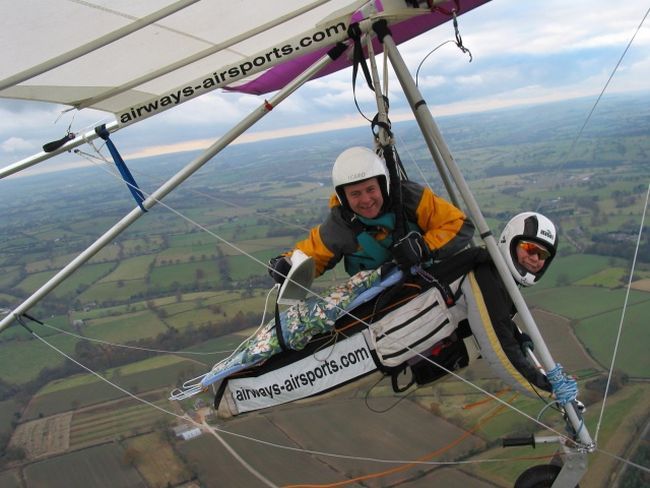
Extreme Ironing Achievements in the World
Very few are willing to do extreme sports. Even fewer are those who do extreme sports while ironing their clothes. However, there have been world-record achievements that have taken place over the years since the extreme sport began. While it is quite difficult to name all of them (especially since many have started world-record trends) it is possible to mention those that broke news. Here are a few:
The Mount Everest Iron
John Roberts, Ben Gibbons, and Christopher Allan Jowsey achieved a mark in history after ironing a Union Jack flag above Mount Everest’s base camp. Their climb remains the world altitude record for the sport today at a height of 17,850 ft above sea level.
The Rowenta Trophy
SEB Group, also known as Societe d’Emboutissage Bourgogne, is a company that sells small household appliances (mainly cookware). The French company gained interest in the sport around 2003, hosting the first Rowenta Trophy event where the South Africans reigned champion.
The Diving Iron
Another impressive feat took place in March 2008. A team of 72 divers ironed clothes underwater, setting a world record for most people simultaneously ironing clothes underwater. However, 86 divers broke the record the following year. On March 28, 2011, the record was broken once again. This time by the Dutch diving club De Waterman, which had 173 divers performing the task in an indoor swimming pool.
Steam’s Return
It took Phil Shaw more than a decade to return to ironing. Shaw, also known as Steam, rouse from his retirement and ran the Hastings Half-Marathons for 13.1 miles while ironing his garments.
Piccoli and the Y-40
The most recent achievement in extreme ironing took place on June 16, 2008, around Montegrotto Terme in Italy. Freediver Roland Piccoli decided to perform ironing 138 ft underwater at the Hotel Teme Millepini’s Y-40 pool (the world’s deepest pool).
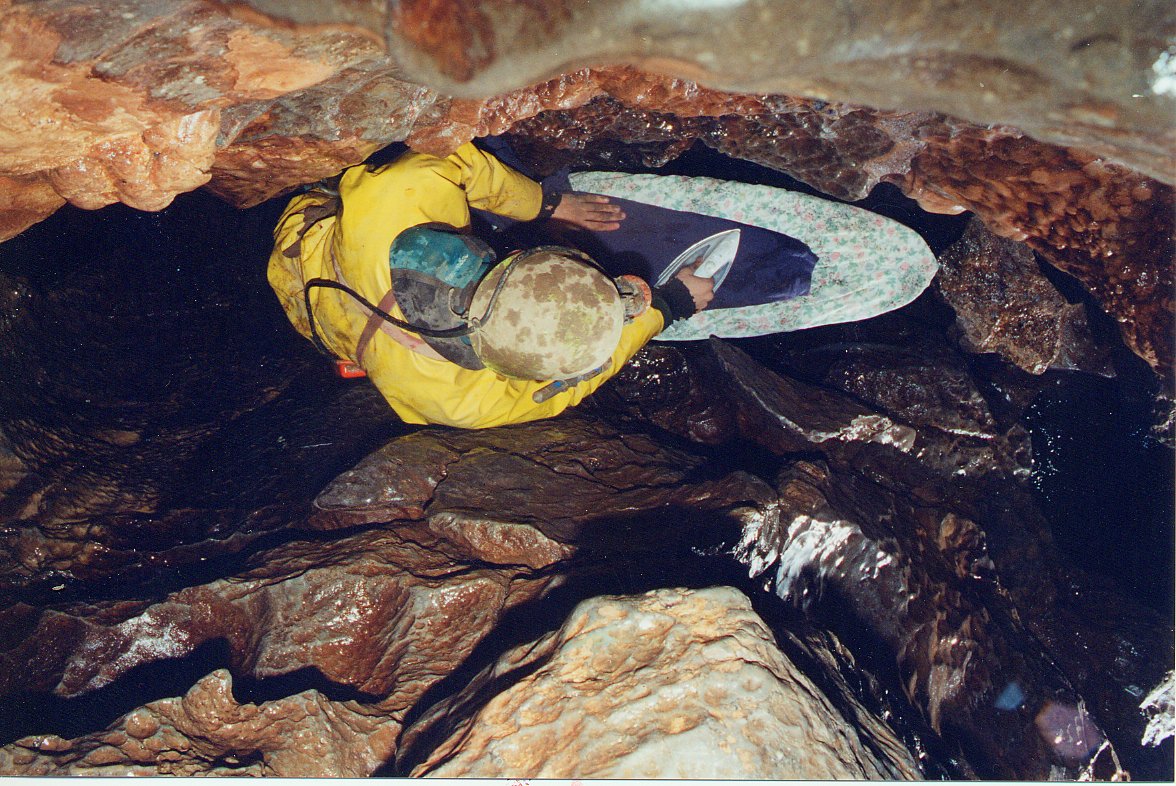
How Do You Participate in Extreme Ironing?
Are you planning on starting a career in extreme ironing? Or maybe you’re just looking for a new hobby to try? Either way, it is important to know the general rules and safety guidelines when participating in an extreme sport. You don’t have to search the whole thing on your own, though. We have most of what you need to start below!
Extreme Ironing Rules
Thanks to the Extreme Ironing Bureau, it’s easy to now know what counts as extreme ironing and what doesn’t. Especially since there are many types of steam irons and ironing boards available in the world. It’s generally fine to use any brand or type if you aren’t participating in an official event. If you want to become a professional, you should know what type of extreme ironing counts as official.
The ironing board must have legs with a minimum length of one meter and 30cm in width and the irons themselves should be of actual iron. This is because the Extreme Ironing Bureau banned plastic irons during official competitions. The Extreme Ironing Bureau also gave strict measurements regarding the garment sizes. You may iron any type of clothing as long as the size of the cloth is not smaller than a tea towel.
Extreme Ironing Safety Guidelines
There are many possible causes of accidents when doing any type of dangerous sport. That is why there are a few basic rules when performing or practicing ironing.
Always know your location well.
Before you perform the sport, you need ample knowledge of the location to prepare for hurdles such as geographical issues that might come your way. Since extreme ironing is a relatively new sport, it is a must for professionals and beginners to be aware of their surroundings. Preventing further damage to yourself is the most important thing. So if you plan on ironing inside a giant tunnel, remember places where you can exit, the dangers that could happen, and solutions to solve hindrances or situations that are possible in times of crisis.
Always wear a helmet.
Your head is the most important part of your body. While a thick skull can usually protect you from damages such as a bad slip to the floor, extreme ironing takes place in locations that offer high risks. With this, wearing a helmet is essential.
A harness is a must.
Regardless of wherever you plan on doing your extreme ironing, it is important to have a harness with you at all times. This is because a harness is useful in carrying the ironing board while tying yourself in a safe position to iron your clothes. This is especially true for extreme ironing positions where you can’t stand, such as sideways on a flat cliff. Carrying the ironing board is also part of the sport too, so it’s safer to tie it with you. You can also apply this for other activities such as scuba diving.
A spotter must always be present.
Spotters exist to constantly keep an eye on you in case something goes wrong. Even without the ironing activity, most extreme sports require a spotter. This allows immediate action and preparedness for both parties. Should you get stuck somewhere like Aron Ralston, you wouldn’t have to cut your arm off to survive. Instead, all you would need is to call out for your spotter who can call for emergency services and of course help you while you both wait.
Experience is the most important lesson.
This isn’t to say that you should jump headfirst without learning the proper rules of mountain climbing, scuba diving, or cycling. This is to warn you that you should have enough experience in the activity before performing extreme ironing. If you are an excellent and licensed scuba diver, it would be much easier for you to do the ironing underwater seeing as you have already dived countless times. Meanwhile, an inexperienced diver might panic midway and cause traumatic experiences, physical harm, and even the end of his life.
Championship Guidelines
How does extreme ironing work in the middle of world championships? The truth is, the judges score your performance during a championship. Whoever gets the highest rated score wins the competition. Now, there are five different sections on world championships that an extreme ironing participant should know.
First off is the urban section, which uses suburban or city settings to display their performance. The next is the water section, which involves surfboards, canoes, or any other fast-flowing river activity while ironing. The third is the forest section, where the athletes bring their ironing boards deep into the forest and climb sharp cliffs or tall trees. The fourth one is the Lauda section, which is the best-known challenge of extreme ironing. The Lauda section has participants climb high surfaces and then iron their shirts at dangerous heights. The last is the freestyle section, where participants of the championship may iron their clothes anywhere they wish to.
Conclusion
We all have our ways of enjoying our hobbies. Some prefer reading, dancing, and a select few prefer extreme ironing. Since there currently is no ongoing event for extreme ironing, you can catch up on previous events on YouTube or follow a few noteworthy ironers such as Phil Shaw on social media.
Is extreme ironing a sport worth an Olympic gold medal? Unfortunately, it isn’t a part of the Olympic Games. However, it is recognized as an official extreme sport enough to host international competitions, which is a big deal for one of the youngest sports to currently exist. Who knows what the future will hold? We do know that extreme ironing has gained popularity over the years and more and more athletes are being hooked by it.
We hope you enjoyed learning about extreme ironing. While it may sound ridiculous, being able to iron your shirts while dangling on the side of a cliff is a talent worth noting. If you plan on attempting extreme ironing, be sure to remember the safety guidelines and rules we provided for you. Who knows? You could be ironing your way to a medal one day!
Was this page helpful?
Our commitment to delivering trustworthy and engaging content is at the heart of what we do. Each fact on our site is contributed by real users like you, bringing a wealth of diverse insights and information. To ensure the highest standards of accuracy and reliability, our dedicated editors meticulously review each submission. This process guarantees that the facts we share are not only fascinating but also credible. Trust in our commitment to quality and authenticity as you explore and learn with us.
